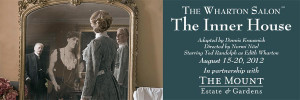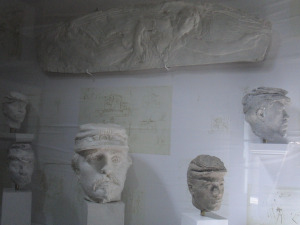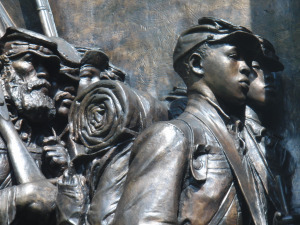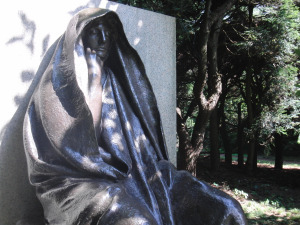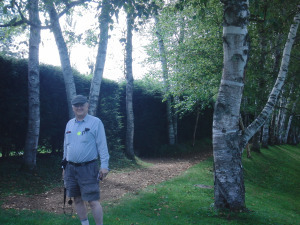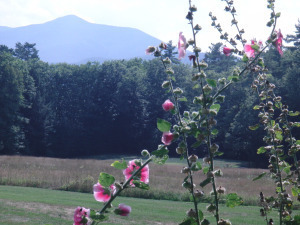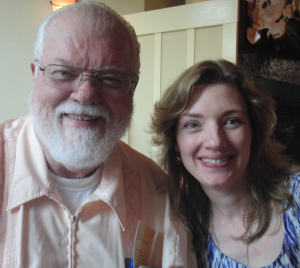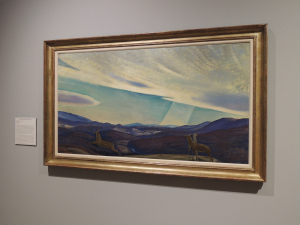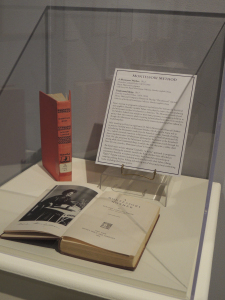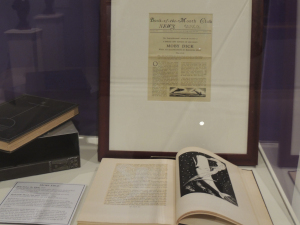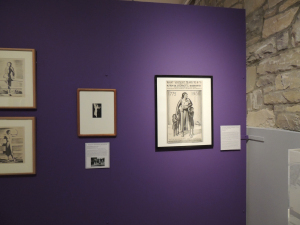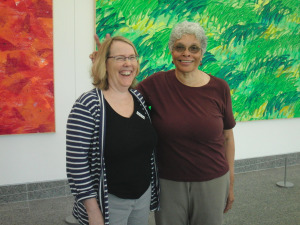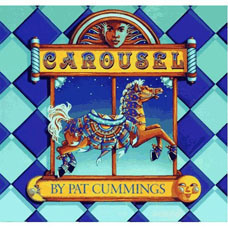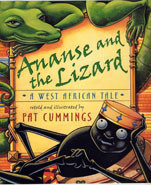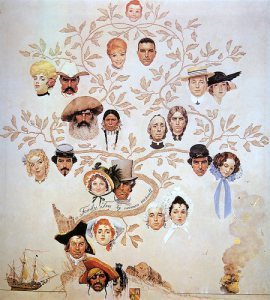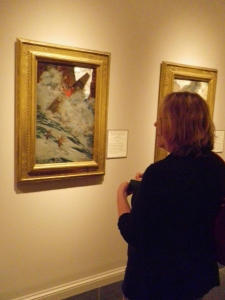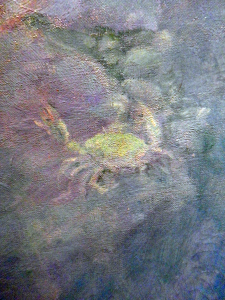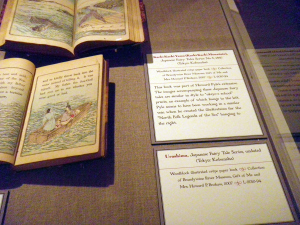Jeannine Atkins's Blog, page 24
September 7, 2012
The Middle of an Ending
There were about twenty minutes last week when I thought I’d finished writing my novel. I knew I’d go back to edit, but I felt the thrill of finishing for at least the length of time it takes to down a late summer beer. It was long enough to wonder why people cheer for you when you finish writing – not to suggest they shouldn’t, but when you really want that chorus and hurrahs is during the long, long middle of getting there. Maybe I guessed my private celebration would change, as I didn’t make giddy announcements, just a quiet, “Done,” maybe with a question mark, to Peter, absorbed in his own thoughts at the table on the porch.
I got back to work pretty quickly going on what I was calling a final pass. You might think I know better, and I do, but I guess I wanted to keep that light ta-da feeling a little longer. Sure enough, excising some dialogue, polishing descriptions, the holes and shine made way for new thoughts. I’m trying not to fill every excavated paragraph and add only at dramatic moments. But the process which I began calling editing is looking more like writing. The manuscript I giddily called done isn’t looking like a first draft, but there are rough edges at the ends of sentences and scenes.
It’s all for the good. I still harbor thoughts of sending this to my agent before the leaves fall; and I’m not counting the brown leaves that cling to oaks. We’ll see. What I’ve come to know is that every manuscript is as individual as a person, each with its own quixotic needs. And the good part is that I don’t feel the removed attitude of a good editor, but that the people in my work are important friends, who need me a little longer.


August 27, 2012
The Inner House: The Life of Edith Wharton
Yesterday was one of those warm but not steamy days that led Edith Wharton to spend summers in a home she called the Mount in Lenox, Massachusetts. My friend Ann, a first grade teacher, took a break from looking for caterpillars and putting up monarch displays to go with me to see a play called The Inner House. The Wharton Salon one woman play was beautifully performed by Tod Randolph, who truly seemed to channel Wharton’s grace and strength. It was adapted by Dennis Krausnick from Wharton’s memoir, A Backward Glance, with occasional quotations from her fiction. The title comes from a short story in which the narrator compares a woman’s nature to “a great house, full of rooms… full of treasures and wonders.”
The play was performed in the shadow of a grand house and gardens that we’re told Wharton loved more than any other place: yet she lived there only about five years. It seems to be at least partly a mystery why she left. Some things we’ll never know, and perhaps some things are revealed that she wouldn’t have chosen for us to know. The play begins with silence and looking that suggests the life of a writer, then the actress recounts Edith Wharton’s youth, speaking of a girl who loved books before she could read them, holding them sometimes upside-down as talismans that let her tell stories. I don’t think her mother was ever described without the word cold before her name. We hear of marriage to a man who was sweet but troubled, and with little in common except for a love of animals. We hear of the affair Edith had in her mid-forties, and the pain riddled through both these relationships.
Edith Wharton was sensual, stoic, and tragic, no surprise to anyone who’s read The House of Mirth, The Age of Innocence, Ethan Frome. or one my favorites, Summer, which shows the richness and pleasures of that season followed by the harshness of a New England winter. The play quotes from a letter to Edith from a reader imploring that if she knows of even one contented woman, couldn’t she write about her? It seems those weren’t her stories to tell. Rather she often concentrated on the tragedies brought about by a society she considered frivolous, in good part because of the narrow choices then offered to women.
Yesterday was the last scheduled performance of this play at the Mount, celebrating the 150th year of the novelist’s birth, but the Wharton Salon will perform elsewhere,
so please check out their website! After the play, Ann and I walked through the magnificent gardens, then strolled around picture perfect Lenox, stopping for quiche, coffee, and meringues (I want to use the word magnificent again) at Patisserie for a taste of Paris where Wharton lived for many years.


August 6, 2012
Visiting the Saint-Gaudens National Historic Site
Augustus Saint-Gaudens (1848-1907) grew up in New York with an immigrant mother and father who told him at age thirteen that it was time to get a job. He apprenticed as a cameo cutter for six years, training his eye by working on these very small sculptures. He took a job cutting cameos in Paris, where he was one of the first Americans to study sculpture at the École des Beaux Arts. His first commissioned sculpture, one of six statues he would make commemorating the Civil War, was of Admiral Farragut.
This remains in New York, but Peter and I saw a copy at the Saint-Gaudens National Historic Site in Cornwall, New Hampshire last week. I loved viewing the workplaces and seeing studies as well as finished work, and his ethos: “A sculptor’s work endures so long that it is next to a crime for him to neglect to do everything that lies in his power to execute a result that will not be a disgrace.” He wrote this while people were clamoring to see the Shaw Memorial, which took fourteen years between the first pencil and plaster sketches to its unveiling on the Boston Common in 1897.
This frieze honors Colonel Robert Gould Shaw and the 54th regiment, the first African American volunteer troop from the north, and one that helped inspire about 175,000 African Americans to serve in the military during the Civil War. This regiment is the subject of the great film, Glory, which shows this statue during the end credits. The original sculpture stands across from the State House in Boston, where 1,000 soldiers marched before sailing south. I love seeing that sculpture between two elm trees, but also liked being in Cornwall, where we could get up close or stand back to a point where in Boston we might get run down by the Duck Tour busses. Hearing birds instead of traffic. Here’s a close-up of the drummer boys ahead of some older men.
Another of my favorite Saint-Gaudens works is this copy of the statue Henry Adams commissioned to mark the Washington, D.C. gravesite of his wife, Clover, who’d battled with depression before taking her own life. He would later be buried alongside her, with neither of their names on the marker.
The site is beautiful. Here’s the back of the house, with gardens fragrant with lilies and phlox.
Peter posed for me in this line of birch trees.
I’ll end with a view of Mount Ascutney from the studio.


August 2, 2012
Irene Latham!
One of the gifts of summer is when people travel into my small western Massachusetts orbit. I’ve felt a kindred spirit with Irene Latham after reading her blog, her beautiful novel, Leaving Gee’s Bend, and her collection of poems, The Color of Lost Rooms. I was happy she let me know that she’d be flying out of Alabama to visit the nearby Emily Dickinson homestead, while taking a literary journey with her father, who shares her passion for books.
We met at Judie’s Restaurant in Amherst, where they shared some stories from the Harriet Beecher Stowe and Mark Twain houses they’d visited in Connecticut the day before. I also loved hearing the proud father speak of his favorite author, Irene. When I asked if he read her blog, he said, “I read everything she writes.” They told me about how when he’d travel when his five children were small, he’d bring back some small thing for Irene to write about. Most things were so common they were hard to remember, but what remains is the link to his daughter who is still inspired by things as small as the “i” she wore as a necklace with a tiny blue stone, or ordinary events that become extraordinary with deliberate attention. And that person who is waiting for whatever she writes next.
When I mentioned envying their relationship, Irene asked who encouraged me to write, giving me a chance to talk about my Grand-mère who didn’t offer exercises, the way her father did, or ask to see poems, but Grand-mère’s pleasure in art and allegiance to beauty gave me a kind of hope I didn’t get from my more practical parents. I was reminded of the different places we find the people who whisper Keep going. Even if a person never used those words, even if they’re not now among the living.
Irene and I talked about the different challenges of writing and marketing poetry and novels, and our frustration about publishing prejudices against works about real people who aren’t deemed famous enough. We talked some about what we’re writing and reading now. Her father seemed happy to listen. For more details of what they saw over a jam-packed few days, visit her blog.
I like what she has to say about how Mark Twain put Huck Finn in the pigeon holes of his desk, the photograph of Edith Wharton’s bedroom and Henry David Thoreau’s gravesite, and also how she includes who couldn’t bother to say good morning in the literary tours, which restaurant to avoid, and the weirdness that is the Massachusetts Turnpike. I only wish we could have visited longer, but I am looking forword to my next summer visitor – a weekend with my daughter!


July 30, 2012
Rockwell Kent’s “Egypt”: Shadow and Light in Vermont
Peter and I recently visited Bennington Museum for a show featuring work Rockwell Kent (1982- 1971) did while living on a farm he called Egypt, which the placards say drew upon Biblical references. Uh oh, I thought. I like a farm that’s just a farm. Rockwell Kent was a good printmaker, painter, and social activist, and according to the biography some kind of mystic, which can be another term for someone you might not want to be married to or have as a father, especially if you throw in his later explorations of Alaska, Newfoundland, and Greenland.
But back to the art Kent did while in Arlington, Vermont, a small town between Bennington and Manchester, from 1919 -1925. I don’t know whether or not this time was a happy period for Kent’s wife and five children, but we can view prints reminiscent of William Blake’s cherubs (which one of his children modeled for) and some gorgeous views of clouds and mountains.
Rockwell Kent may be best known for the wonderful woodblocks he produced for a 1930 version of Moby Dick, which were used for a Book of the Month Club edition. This job may have come his way because of his friendship with Arlington resident Dorothy Canfield Fisher, author of Understood Betsy, a book I loved as a child, and who was a Book Club judge for several decades. Here’s a photo displaying that novel and Fisher’s 1912 work, A Montessori Mother. And a bit of Moby Dick
I have a small quarry obsession, so I liked seeing this poster promoting a strike for better work conditions at the Vermont Marble Company, on the right in this picture Peter took, At the top is the year of the strike and 1775, the year that Ethan Allen and the Green Mountain Boys attacked Fort Ticonderoga, claiming the first victory of the Revolutionary War.
The show will stay up through October 30, a month when the beautiful mountains around the museum will be ablaze.


July 19, 2012
Pauses
Right now I’m on elbow-deep in the last chapters of what I call in very heavy quotes a final draft of a novel. This means the words must follow some logical order. No more fragments and run-ons, or only if they’re deliberate. Dialogue should be at least a little logical, and trimmed. I’m making this happen by chopping out pages and paragraphs, setting apart and rearranging others amid blocks of fresh material. I leave spaces between, which makes me think of the impressionists, who are included in my novel, and the way some left white spaces between paint strokes, especially when depicting water or sky, to show a sense of movement, to keep the surface alive.
Those spaces are where I can change words, order, and rhythms. They remind me of the great unknowing of starting out as well as the breaks in my writing days, which used to coincide with picking up my daughter from school. Now Emily is beautifully grown, but the timing stuck with various dogs over the years, who paced around the computer at three o’clock to remind me it was time to go outside. On lucky days, the writing continues in my head. Some sentences I worked on jiggle into new places. A bit of conversation continues. A motive springs up. Less lucky days are still good. The dog is happy. I get to stretch, and see day lilies and Queen Anne’s lace, both of which flourish this hot July, tangling like the metaphors and similes I’m about to mix.
While I move toward some kind of end to my novel, I don’t want to send away my muse, or unconscious, or whatever the capricious part of my mind wants to be called. Honey? I want to keep the feeling we have before opening a trunk in an attic, before we are amazed or disappointed, keep that edgy sense of what’s next? I want my characters to know that even with lines looking set and pretty, they, too, still have room to wander, nap, continue or abort a conversation. I leave room for images to unfold, like origami, or break open, showing the layers within a stone. The prose should be woven, but not so tightly that I still can’t poke in a pencil. The table set, but with spaces left to move silverware or soup bowls.
All along the way, I think we need to roughhouse some sentences into place, but also to swing in a hammock and see what words float by, to balance effort and letting go. The trick is being ready for anything. Maybe the piece is more finished than I thought. Maybe it’s not. Maybe I’ll get find good new words to add, and maybe I’ll get silence, and not the benevolent kind. But like the orange lilies by the road, that’s all good, too.


July 16, 2012
Joy, Engagement, and the Art of the Book: Pat Cummings at the Eric Carle Museum
I had the pleasure of hearing picture book author and illustrator Pat Cummings speak at the Eric Carle Museum of Picture Book Art on Saturday. In her series of books, Talking with Artists, she asks creators for pictures of drawings or sculptures they did as children, as well as the work that brought them fame, so that children can see one starts at one place and ends up at another. Pat structured her talk this way, too, talking about her first attempts at making art, and a ballerina and glitter obsession. Family is a big theme in her work, and her talk included not only stories from childhood, but recent conversations with her husband and mother. She collaborated on Talking with Adventurers with her sister, who’s a scientist, and was also the model for the mother in one of her early books, Just Us Women by Jeannette Caines. Books such as Jimmy Lee Did It and Clean Your Room, Harvey Moon were inspired by her little brother. Or maybe that rascally brother is just part of her: here’s me with Pat, unable to resist rabbit ears, after her talk.
She said that she likes the freedom that picture book creators have to change styles, and she enjoys working in mixed media on books such as C.L.O.U.D.S., which is about an angel who designs the sky, and Carousel, about a girl’s fantasy. Humor was a big part of her talk, though she took a serious tone when stating her belief that all kids should see themselves in books, that no one should feel excluded. And the theme of connecting with other artists was strong. She thanked Tom Feelings for helping her get started on her first picture book, and she’s made sure she helps others in turn. Her talk often turned to other artists for children’s books she admires, such as Brian Selznick and Lane Smith. She said, “Every artist inspires me,” explaining not in the sense that she sees their art and can do something like it, but “the kind of inspiration when at three in the morning you can’t get the nose right, and you think. ‘what would and Leo and Diane Dillon do?’ They’d keep going.”
Her dedication to community is evident in her teaching at Pratt, Parsons School of Design, and a Children’s Book Boot Camp she runs in summer. And she left the riveted audience with inspiring words. “A lot of people tell themselves no. If you have a story to tell or art you want to do, do it. There’s a lot of joy just in creating.”


July 9, 2012
Boredom and Writing
A former student just asked me what I do when I get bored while writing a novel. Apparently I’d been muttering loudly, and it was too late to claim that it’s all fireworks all the time at my table on the porch. When I find myself wiggling, sometimes I call up the great role models of obsession (which may or may not be a synonym for discipline), such as Marie Curie, who stirred pots of potash for four years, hoping she’d isolate a new element, or Mary Anning, chiseling stone to uncover fossils day after day after day.
Then there is the tried and true Dangling Carrot approach. Local strawberries and an outing with Peter to see Brave, a baby sighting, and some swims were this weekend’s post-writing pleasures. Some people, perhaps the same ones who enjoy pedometers, get small thrills from daily word counts, though enough of my work is cutting to make this rarely work for me. There are tricks: when one section of a book seems tiresome, I’ll switch to another scene. My procrastinating self is gullible enough that when the other me tells the procrastinator she’s getting a break, she hardly notices that I’ve given her another task.
Sometimes I deliberately work on a chapter ahead, then want the one before to look just as pretty. Sometimes it’s about managing size. I can feel overwhelmed, and its cousin boredom, by the sheer scope of things, so it’s good to divide things into chunks, employing corkboards or pink and green paper clips to finesse manageable blocks. In a pinch, one can line up those paper clips, or turn them into star shapes. And let it be stated that the middle of a revision is no time to give up coffee.
But there’s got to be more on the table to keep the prose from turning limp in the ninety or so degrees. I’m revising revisions, and know these characters well. Or do I? Now and then, I’d better put them in some new places or at least scan the rooms they’re in with fresh eyes. Even while trimming, I’d better let them talk longer, perhaps shout, and keep an ear out for something new. But while I stick to cutting, I find that the willingness to let things go does crack open windows. Yes, I love my characters, but just like the real people we adore, it’s great when they surprise us. I can’t hold too tight. I have to let characters I thought I new change clothes, and prose I once thought was shiny crumble, then shape it up again.
My former student, let me call her Deb, mentioned reading Code Name Verity, and how inspired she was by its complicated structure, which included switching points of view. “But I have a suspicion that I should practice the plodding structure first and get good at that before I attempt to Picasso-ize it, right?” she wrote. I don’t know. There’s something to be said for learning A to B to C, but if you’re restless and yearning and can analyze how something was done, I don’t see why you can’t try to borrow a frame. It’s instructive to read Rebecca Skloot, author of The Immortal Life of Henrietta Lacks, on how “structure can just completely make or break something.”
Then again, is the reading and analyzing what makes something work not to be used as a template, but just a necessary vacation for the mind? I was just swept away by State of Wonder by Ann Patchett. I’m sure there’s a lot to learn from this brilliant novel, but maybe I just needed to spend some evening hammock time in a world that could hardly be more different than the one in which I spend most of the day.
This brings us back to commitment and high tolerance for process over result, which I know Deb has: she was a weaver in a previous life. There’s a barrel of potash to stir, a rock to chip into with a careful, constrained grip. But one can find surprises in the sentences, and celebrate them when they appear. Marie Curie had to be satisfied with the dream of a new element, and Mary Anning with the glimpse that the world was older than her neighbors thought, but lucky writers get to marvel at the way we can break open or twist a sentence and find something fresh. Maybe we do want to risk changing points of view. Or let the characters who didn’t speak to each other before sit side by side, or brawl, or kiss. Revisions can be a great time to stir in setting. The details of rooms or yards that were decorative perhaps don’t need to be pared, but instead given a context where they add tension (Okay, I did pick up a few things from Ann Patchett.)
Only we can tell when boredom is something we have to endure, and when it might be a sign to shake things up. I do think we have to get down a string of words while sometimes ignoring a desire to make more coffee, or weed the flowerbed we gaze out, or hang out with the dog. There’s that hammock. There’s always another book to read. We’ve got to shut out the siren voices and work, but without forgetting the spirit of play, or taking weird chances. Look under the bed you made of words, open the drawers, check the basement. Maybe there are fireworks after all.








July 5, 2012
Howard Pyle at the Norman Rockwell Museum
A few days ago, Peter and I spent a happy afternoon seeing Howard Pyle: American Master Rediscovered at the Norman Rockwell Museum in Stockbridge, MA. Howard Pyle has inspired many who paint people in action, and often peril, by his work based on myths, King Arthur legends, folk tales, the Bible, and other narratives, many done for Scribner’s and other popular magazines.
Norman Rockwell was among the many illustrators who admired him. It’s too small to see in this image of Rockwell’s tall painting Family Tree (you’ll have to go to the show to see it!) but that treasure chest at the bottom bears the initials “H.P.” in his honor.
We’re told that Pyle compiled a large collection of antique furniture and clothing he had his models wear, but at the time, reliable references for pirates weren’t great, so he blended what he knew and imagination, which shaped our ideas of what a pirate looks like. He depicted lots of pirates, mermaids, sea adventures and creatures, and his waves have great blues and greens, and enough depth and movement to make me feel slightly seasick. Peter took this picture of me admiring one, then a close-up of a crab from his oil painting, The Mermaid.
Pyle was influenced by the precise lines, sharp edges, a rich detail, and romanticism of pre-Raphaelite artists, such as William Holman Hunt, and now and then the show puts such inspirations beside his work. The instructive cards at the side also tell us that the 1867 World Fair in Paris brought Japanese ukiy-e or woodblock prints to the attention of artists, who were influenced by the two dimensional look, sharp cropping, and flat color.
Pyle taught first at Philadelphia’s Drexel Institute of Art, before founding his own school in Delaware. He urged his students, including N. C. Wyeth and Jessie Willcox Smith (and the other “Red Rose Girls,” who he nicknamed) “to live in the picture” and “Imagine things vividly and make them as real as they are.” The exhibit runs through October 28, aka foliage season in the Berkshires.








July 3, 2012
Word Count: Adding, Not Subtracting
We who write children’s books are invested in hopeful if not happy endings, but it doesn’t mean we’re not aware that stories can end in other ways. So these past two months, while doing some radical trimming and promising myself the joy of writing the last third of the book as a reward, I had a niggling fear that my reward would take an ironic turn, that my pen would feel heavier than the knife I’d been weilding. I longed to get my character to Europe c. 1870, and reap the pleasure as if I were there myself, minus jet lag (or seasickness) and bills.
My porch isn’t Paris, but I’m having fun in territory that’s familiar, with enough time having passed between drafts that it feels fresh. Those hats laden with feathers! Those gloves with buttons to the elbow! That bread and cheese! And after all this time with a blade, I’ve got a sense in my bones of wanting to keep things somewhat lean, which makes sense as things stream toward a conclusion. There will be some flooding, conversations that may meander, but I’m doing my best to keep them from circling. I like moving forward, even though, just as in the children’s game of Mother, May I?, there are occasional side steps and giant leaps back. But I’m determined to cross that finish line. Conversations in my mind can look like this: Is it hot on the porch? Yes. Well, you might as well keep writing. Is it not sweltering? Yes. Yay, what a great day to write.
Sometimes writers have to put in words we’re bound to take out, and the high temps made me less than vigilant. It’s all okay. I know my good writing group will point out sentences and possibly chapters that don’t belong. I won’t be sanguine, though I’ll try not to moan. And remember that while tearing into my manuscript to pull out digressions and fluff and just general lengthiness, the ragged edges that were left gave me a few new ideas. The poking made the manuscript feel more stretchy, inviting new thoughts, so I added, and backtracked. Other holes realigned or stayed as they were, giving a smart smack of stopping while I’m ahead. I hope.
Now, should I cut that last sentence? I’m leaving it for now. The great period of second and third guessing will come later. For now I’m enjoying moving forward. Mother, May I? Yes, you may.









